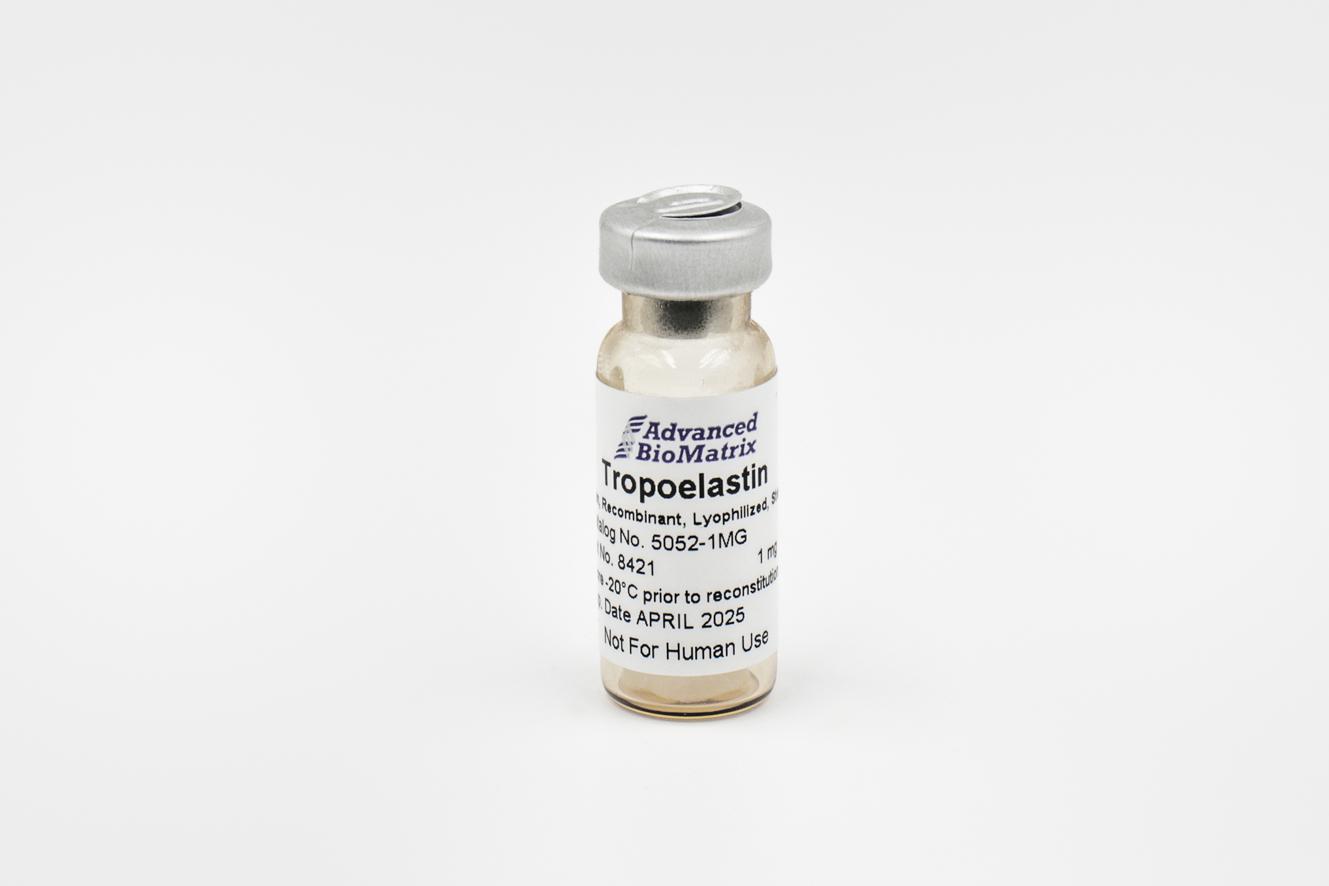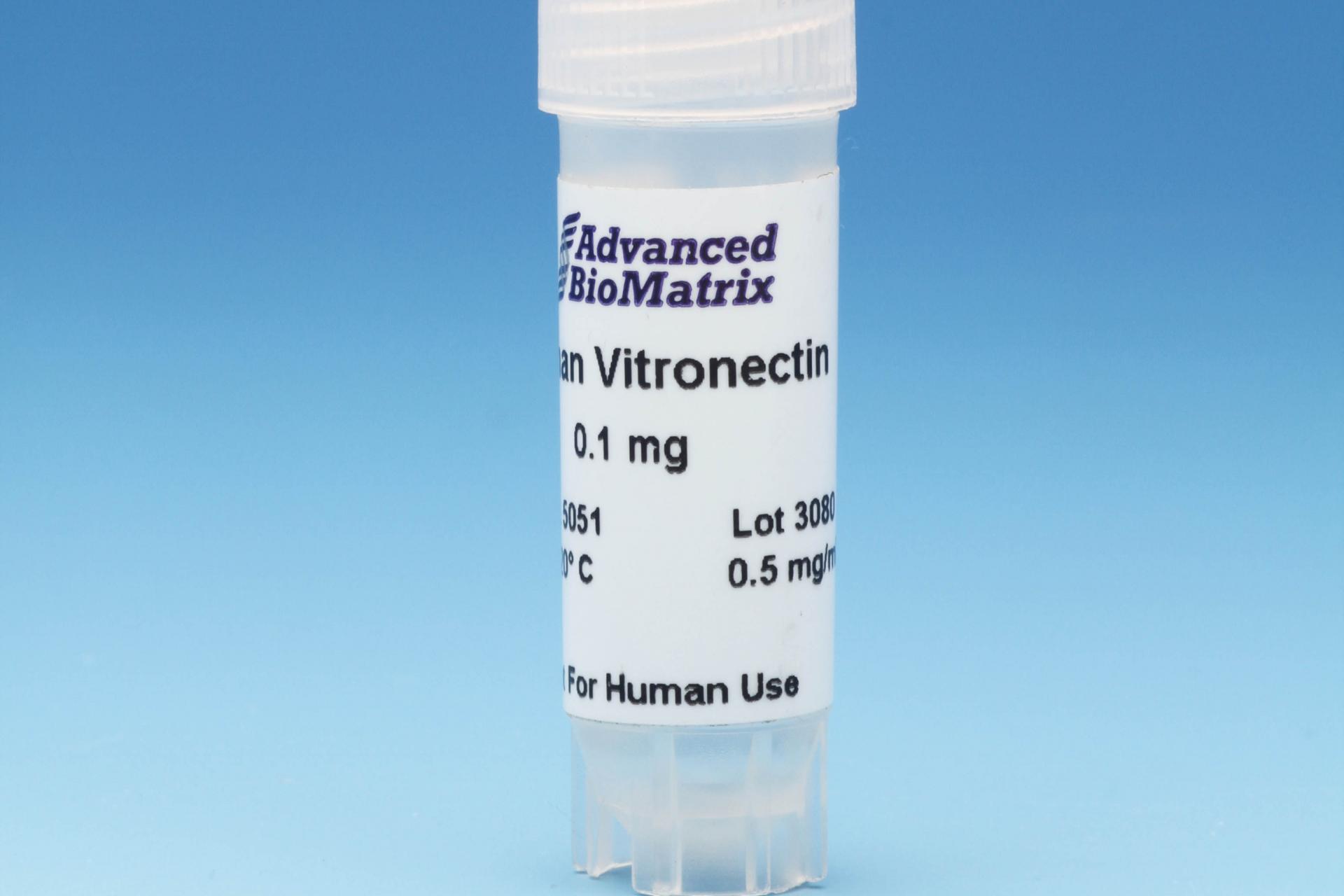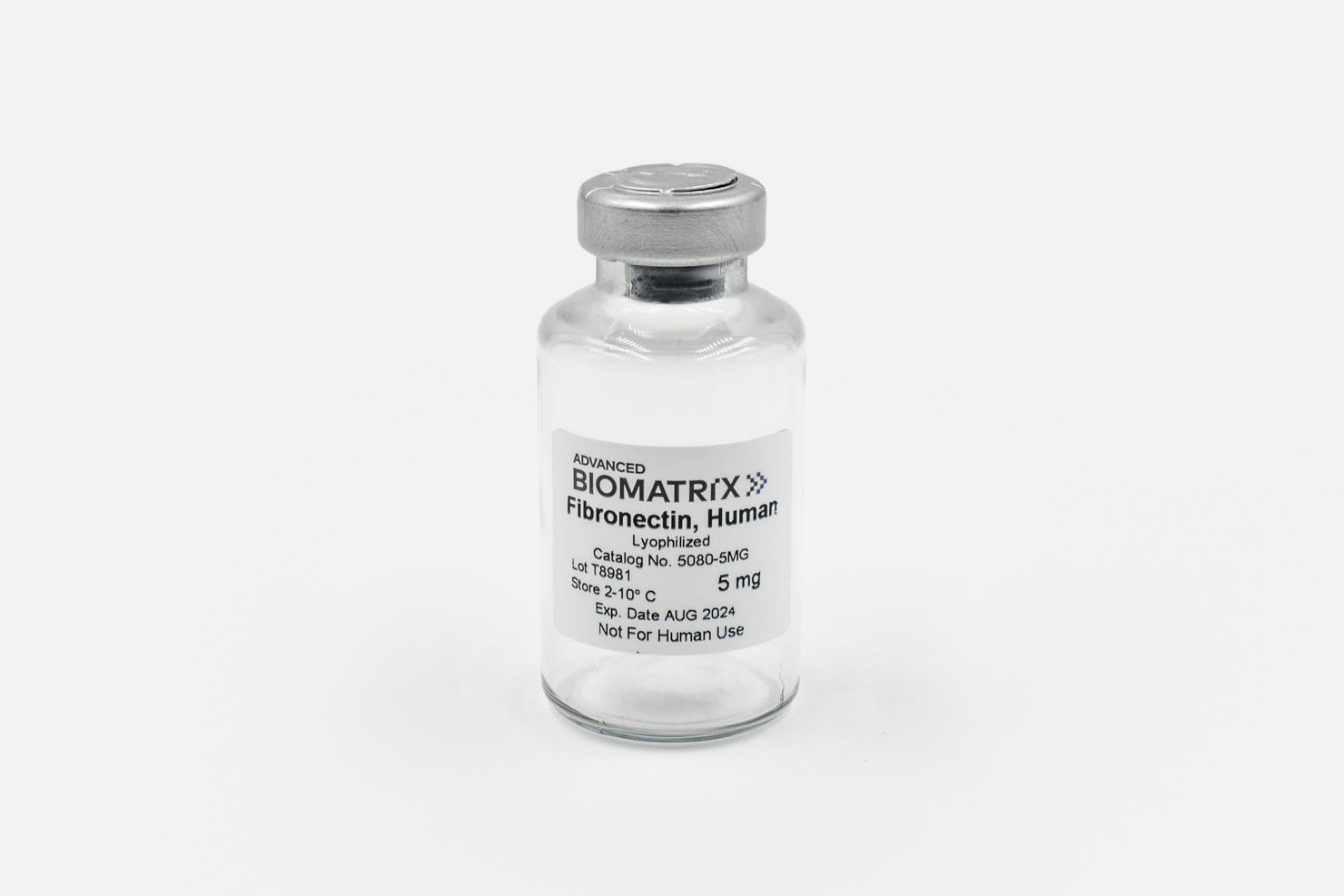-
Collagen
-
Type I - Atelocollagen
- PureCol® Solution, 3 mg/ml (bovine) #5005
- Nutragen® Solution, 6 mg/ml (bovine) #5010
- FibriCol® Solution, 10 mg/ml (bovine) #5133
- PureCol® EZ Gel, Solution, 5 mg/ml (bovine) #5074
- PureCol® Lyophilized, 15 mg (bovine) #5006
- VitroCol® Solution, 3 mg/ml (human) #5007
- VitroCol® Lyophilized, 15 mg (human) #5008
-
Type I - Telocollagen
- TeloCol®-3 Solution, 3 mg/ml (bovine) #5026
- TeloCol®-6 Solution, 6 mg/ml (bovine) #5225
- TeloCol®-10 Solution, 10 mg/ml (bovine) #5226
- RatCol™ for 2D and 3D, Solution, 4 mg/ml (rat) #5153
- RatCol™ High Concentration, Solution, 10 mg/ml (rat)
- RatCol™ lyophilized, 100 mg (rat)
- RatCol™ for Coatings, Solution, 4 mg/ml (rat) #5056
- Type I - Insoluble Collagen
- Type I - Bioinks
- Type II Collagen
- Type III Collagen
- Type IV Collagen
- Collagen Standard
-
PureCol® Collagen Coated Plates
- Collagen Coated T-25 Flasks #5029
- Collagen Coated 6-well Plates #5073
- Collagen Coated 12-well Plates #5439
- Collagen Coated 24-well Plates #5440
- Collagen Coated 48-well Plates #5181
- Collagen Coated 96-well Plates #5072
- Collagen Coated 384-well Plates #5380-5EA
- Collagen Coated 100 x 20 mm Dishes #5028
- MatTek Glass-Bottom Dishes
- MatTek Multi-Well Plates
- Collagen Scaffolds
- Collagen Hybridizing Peptides
-
Type I - Atelocollagen
- Tunable Stiffness
- CytoSoft™ Rigidity Plates
-
Bioprinting
- Support Slurry for FRESH Bioprinting
-
Bioinks for Extrusion Bioprinting
- Lifeink® 200 Collagen Bioink (35 mg/ml) #5278
- Lifeink® 220 Collagen Bioink (70 mg/ml) #5343
- Lifeink® 240 Acidic Collagen Bioink (35 mg/ml) #5267
- Lifeink® 260 Acidic Collagen Bioink (70 mg/ml) #5358
- GelMA Bioink
- GelMA A Bioink
- GelMA C Bioink
- Pluronic F-127 40% Sterile Solution
- GelMA 20% Sterile Solution
- Alginate 5% Sterile Solution
- Photoinitiators
- Bioinks for BIONOVA X
- Bioinks for Lumen X
- DLP Printing Consumables
-
Create Your Own Bioinks
- PhotoCol® Methacrylated Collagen
- PhotoGel® Methacrylated Gelatin 95% DS
- PhotoGel® Methacrylated Gelatin 50% DS
- PhotoHA®-Stiff Methacrylated Hyaluronic Acid
- PhotoHA®-Soft Methacrylated Hyaluronic Acid
- PhotoAlginate® Methacrylated Alginate
- PhotoDextran® Methacrylated Dextran
- PEGDA (Various Molecular Weights)
- Silk Fibroin, Solution
- PhotoSericin® Methacrylated Sericin
- Bioprinters
-
3D Hydrogels
- Thermoreversible Hydrogel
- Silk Fibroin
-
Type I Collagen for 3D Hydrogels
- PureCol® Solution, 3 mg/ml (bovine) #5005
- Nutragen® Solution, 6 mg/ml (bovine) #5010
- FibriCol® Solution, 10 mg/ml (bovine) #5133
- PureCol® EZ Gel, Solution, 5 mg/ml (bovine) #5074
- VitroCol® Solution, 3 mg/ml (human) #5007
- TeloCol®-3 Solution, 3 mg/ml (bovine) #5026
- TeloCol®-6 Solution, 6 mg/ml (bovine) #5225
- TeloCol®-10 Solution, 10 mg/ml (bovine) #5226
- RatCol® for 3D gels, Solution, 4 mg/ml (rat) #5153
- HyStem® Thiolated Hyaluronic Acid
- Methacrylated Collagen
- Methacrylated Gelatin
- Methacrylated Hyaluronic Acid
- Diacrylates
- Collagen Sponges
- Methacrylated Polysaccharides
- Spheroids and Organoids
- Extracellular Matrices
- HyStem / Hyaluronic Acid
-
Adhesion Peptides / Proteins
-
Recombinant Adhesion Proteins
- CD2, 0.5 mg/ml #5086
- CDH3, 0.5 mg/ml #5124
- CDH13, 0.5 mg/ml #5125
- CD14, 0.5 mg/ml #5089
- CDH18, 0.5 mg/ml #5090
- CD40, 0.5 mg/ml #5093
- CD86, 0.5 mg/ml #5096
- CD164, 0.5 mg/ml #5100
- CD270, 0.5 mg/ml #5127
- CD274, 0.5 mg/ml #5126
- CD276, 0.5 mg/ml #5123
- E-Cadherin (CD324), 0.5 mg/ml #5085
- ICAM2, 0.5 mg/ml #5107
- Adhesion Peptides
- Collagen Hybridizing Peptides
-
Recombinant Adhesion Proteins
- Reagents
- Assays
Fibronectin
Solution, 0.5 mg/ml (Human)
Catalog #5050
Fibronectin
Solution, 0.5 mg/ml (Human)
Catalog #5050
This Fibronectin solution has been purified from human plasma where it is found as a dimer and has a size of 440-500 kDa with two similar subunits (220-250 kDa) linked by two disulfide bonds. Fibronectin’s primary function is related to cell adhesion and attachment to extracellular matrix.
Product Description
| Parameter, Testing, and Method | Fibronectin #5050 |
| Quantity | 1.0 mg |
| Volume | 2.0 mL |
| Concentration | 0.5 mg/mL |
| Purity - SDS PAGE Electrophoresis | >95% |
| Formulation | 20 mM Tris-HCL, pH 7.0 containing 0.45 M NaCl and 12% Glycerol |
| Form | Solution |
| Source | Human, Plasma |
| Storage Temperature | -20°C |
| Shelf Life | Minimum of 6 months from date of receipt |
| Sterilization Method | Filtration |
| Cell Attachment Assay | Passes |
| Sterility - USP modified | No growth |
| Safety | Source material found negative for infectious agents |
Directions for Use
Recommended Volumes for 2D Coatings or 3D Hydrogels
Download the full PDF version or continue reading below:
Coating Procedures:
Use these recommendations as guidelines to determine the optimal coating conditions for your culture system.
- Thaw Fibronectin and dilute to desired concentration using serum-free medium or PBS (Ca++, Mg++ free). The final solution should be sufficiently dilute so that the volume added covers the surface evenly.
- Add appropriate amount of diluted material to culture surface.
- Incubate at room temperature for approximately 1 hour.
- Aspirate remaining material.
- Rinse plates carefully with dH2O– avoid scratching bottom surface of plates.
- Plates are ready for use. They may also be stored at 2-8°C damp or air dried if sterility is maintained.
Product Q & A
440 kDa. The protein is a dimer of two 220 kDa identical subunits. It shows up as 220 kDa on a reduced gel, and 440 kDa on a non-reduced gel.
The fibronectin (Cat. No. 5080-5MG) is prepared in a glycine/NaCl buffer and when the lyophilized pellet is reconstituted with sterile water at a 1 mg/ml concentration the resulting pH is neutral (~7.4-7.6).
Fibronectin has two nearly identical molecules that are linked together in a dimer configuration. Each of those molecules has one RGD site: https://doi.org/10.1002/iub.493
Product Applications
Matrigel Alternatives for Neuronal Assays
Matrigel Alternatives for Migration and Wound Healing Assays
Product References
References for Fibronectin:
Alhussein, Ghada, et al. "A spatiotemporal characterization method for the dynamic cytoskeleton." Cytoskeleton 73.5 (2016): 221-232.
Pezzoli, Daniele, et al. "Fibronectin promotes elastin deposition, elasticity and mechanical strength in cellularised collagen-based scaffolds." Biomaterials 180 (2018): 130-142.
Wiley, Luke A., et al. "Generation of xeno‐free, cGMP‐compliant patient‐specific iPSCs from skin biopsy." Current protocols in stem cell biology 42.1 (2017): 4A-12.
Wiley, Luke A., et al. "Using patient-specific induced pluripotent stem cells and wild-type mice to develop a gene augmentation-based strategy to treat CLN3-associated retinal degeneration." Human gene therapy 27.10 (2016): 835-846.
Worthington, Kristan S., et al. "Two-photon polymerization for production of human iPSC-derived retinal cell grafts." Acta biomaterialia 55 (2017): 385-395.
Li, Ling, Mizuho Fukunaga-Kalabis, and Meenhard Herlyn. "Isolation and cultivation of dermal stem cells that differentiate into functional epidermal melanocytes." Human Cell Culture Protocols. Humana Press, 2012. 15-29.
Boularaoui, Selwa Mokhtar, et al. "Efficient transdifferentiation of human dermal fibroblasts into skeletal muscle." Journal of tissue engineering and regenerative medicine 12.2 (2018): e918-e936.
Product Certificate of Analysis
No result for .
Safety and Documentation
Product Disclaimer
This product is for R&D use only and is not intended for human or other uses. Please consult the Material Safety Data Sheet for information regarding hazards and safe handling practices.







